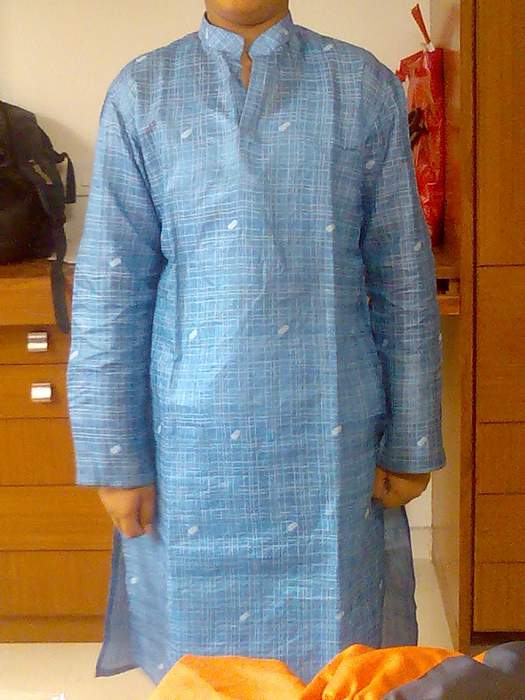Khadi
Hand-spun cloth from the Indian Subcontinent, usually made out of cotton
Khadi ▸ Facts ▸ Comments ▸ News ▸ Videos

Khadi, derived from khaddar, is a hand-spun and woven natural fibre cloth promoted by Gandhi as swadeshi for the freedom struggle of India and the term is used throughout the Indian subcontinent. The first piece of the hand-woven cloth was made in the Sabarmati Ashram of Gandhi during 1917–18. The coarseness of the cloth led Gandhi to call it khadi. The cloth is made from cotton, but it may also include silk or wool, which are all spun into yarn on a charkha. It is a versatile fabric that remains cool in summer and warm in winter. To improve its appearance, khadi is sometimes starched to give it a stiffer feel.
| 0 shares | ShareTweetSavePostSend |
![KVIC Achieves Historic Turnover | Record Growth in Sales and Job Creation Under PM Modi's Leadership [Video]](https://video.newsserve.net/300/v/20250422/1408765974-KVIC-Achieves-Historic-Turnover-Record-Growth-in.jpg) KVIC Achieves Historic Turnover | Record Growth in Sales and Job Creation Under PM Modi's Leadership Credit: Oneindia Duration: 03:23Published | |
You Might Like
No news matches foundSorry, we were unable to find any results in our database for your queryFree news archive accessDid you know? You are eligible to search our news archive with millions of news references free of charge. To do this, please sign in first at the top of the screen. • Information about free access to our news archive Search this site and the web:  |
